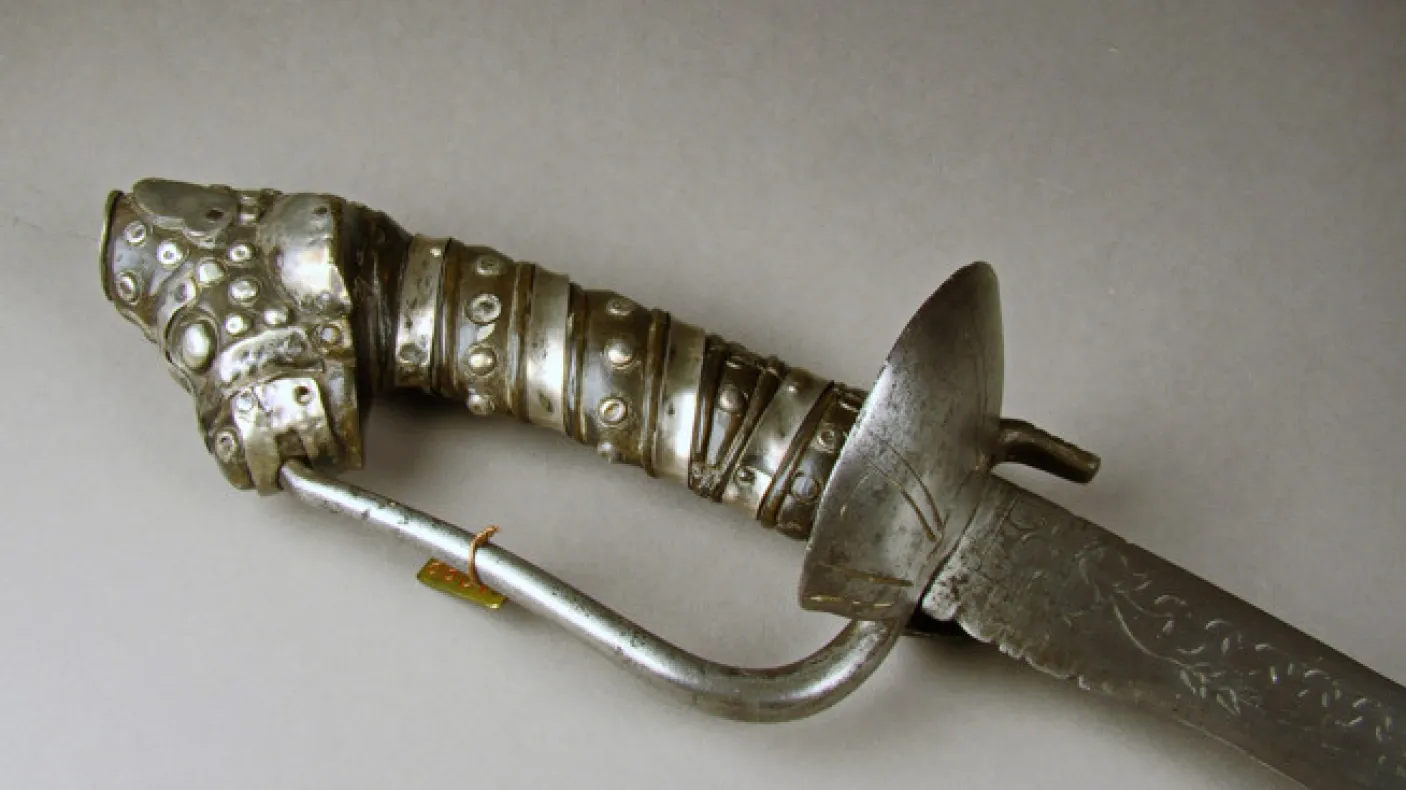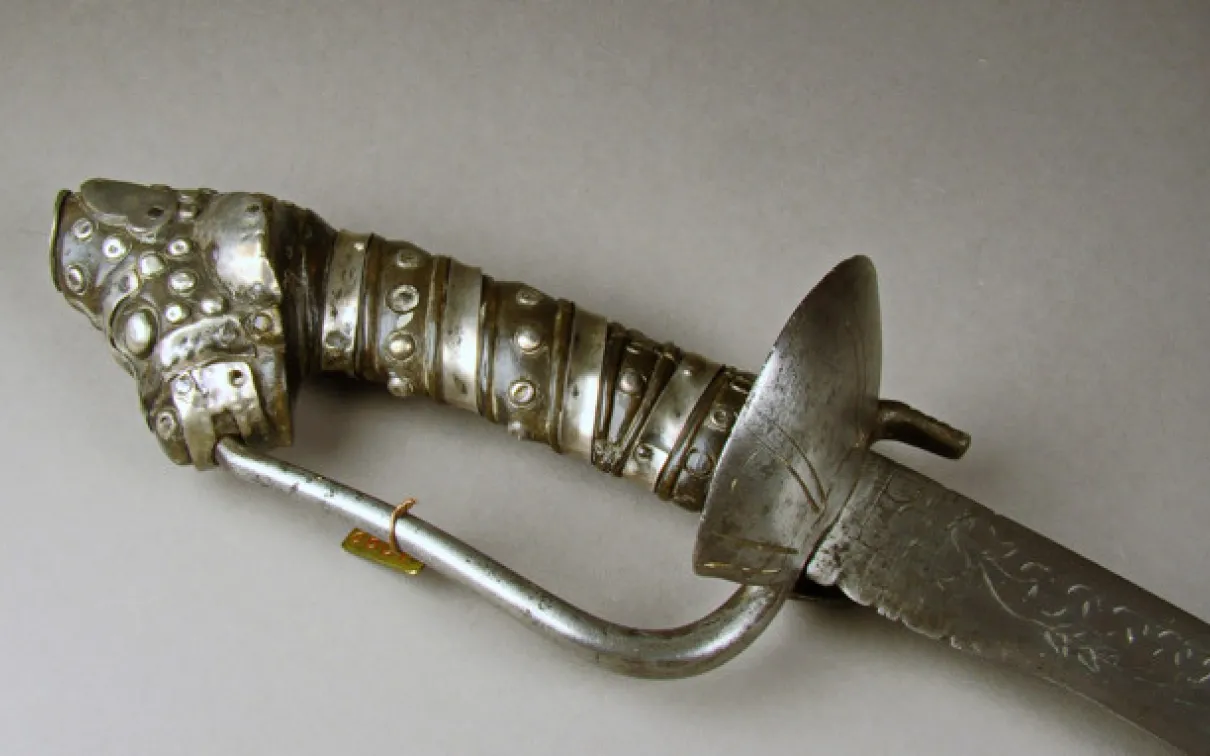Weapon Wednesday: Swords from the Philippines
Published
Categories
Author
Blog Post
The Philippines are a group of over 7,000 mountainous islands, mostly of volcanic origin, in Southeast Asia. They may be divided into three geographic areas: in the north is Luzon, mostly one large island and the location of the capital and most populous cities of the Republic, together known as Metro Manila; the Visayas in the centre are a group of smaller islands; and Mindanao in the south, which is also mostly one large island. Being in the typhoon belt the islands receive several typhoons a year; and they are located on the Pacific "Ring of Fire," which means it is geologically unstable and prone to earthquakes and volcanism. Modern humans have lived in the Philipines for 50,000 years, the descendents of these first settlers are related to the aboriginals of Australia and New Guinea. The bulk of the population is genetically Austronesian, related to the peoples of Malaysia, Indonesia and Polynesia. Contact with China, India and other parts of Southeast Asia brought in different people, and different ideas. Islam was brought in from the South (Muslim peoples are known as "Moro" from the Spanish for Moor); while the Chinese brought blade technology and many loan-words.
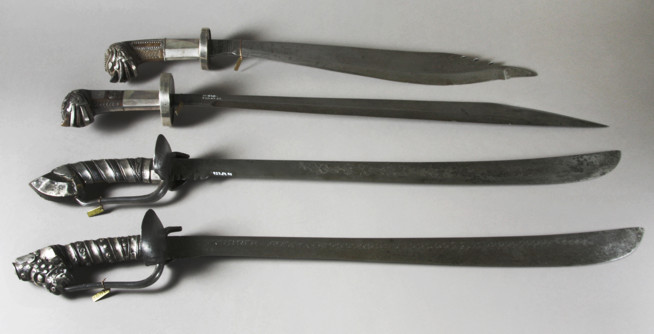
Filipino swords in the ROM collection (photo by Rosalie Villanueva).
After a long rich history, the Philipines were "discovered," much to the surprise of the local inhabitants, by the Spaniard Ferdinand Magellan in 1521. Immediately Magellan got involved with local politics and got himself killed. In 1543 Ruy López de Villalobos named the islands Las Islas Filipinas after Philip II of Spain. Spanish authority was established by Miguel López de Legazpi in 1565. The Philippines would be a part of the Spanish empire for 300 years, leading to much of the population having Spanish names and Roman Catholicism being the dominant religion. In the Spanish-American War (1898) the Philipines were acquired by the United States, who promptly had to suppress a revolt by the local population which created up to 220,000 Filipino casualties. The Americans made English the official language. The country finally became independent in 1946 and now Tagalog, the primary language in the Manila area and the first language for a third of the population, is the official language along with English.
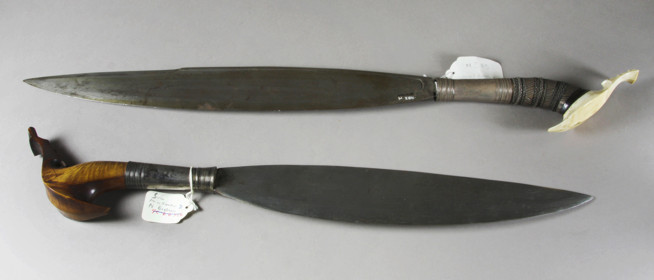
This type is typically known as a "barong" or "borong" and seems largely identified with the Tausūg, a Moro group from Mindanao (photo by Rosalie Villanueva)..
Like most other parts of the world, the warriors of the Phillipines developed and practiced a martial art, based on the weapons favoured in the region. In such a geographically heterogeneous land it might be expected that there are a number of variants, and also imports from adjacent lands. Formularised Philipino martial art is often known as Eskrima, a term derived from the Spanish, and also Kali, a term thought to be derived from native languages. Stick fighting is an important part of this art, and some have suggested that sticks were taken up under the Spanish who made bladed weapons illegal, but like other stick-fighting techniques, in Filipino stick-fighting the most advantageous target is known to be hard bony parts of the body, not the soft flesh that a knife or sword would be better applied to.
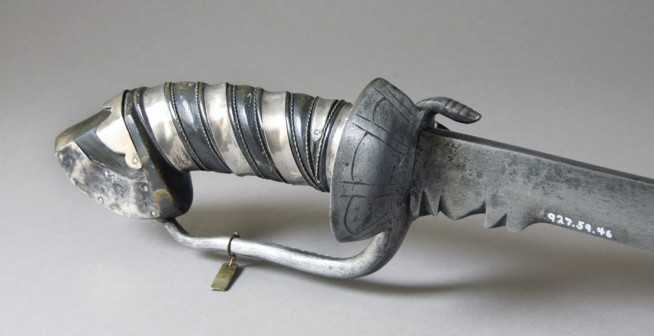
The shell-guard is common on European cutlasses of the 17th century (photo by Rosalie Villanueva).
Swords are described in the first Spanish accounts, accounting the death of Magellan. The native Filipinos used bamboo spears, at times with iron points, and shields; but in the final assault used curved swords. The names of Filipino swords vary across the islands, and examination of the literature will give different names to the same weapon, and attribute different origins to weapons that look the same. For instance the machete-like bolo is also a sundáng, binangon, talibong, or an iták while sometimes it seems names can be put together, for instance the lion-headed tenegre sword might also be called a bolo because of the blade.
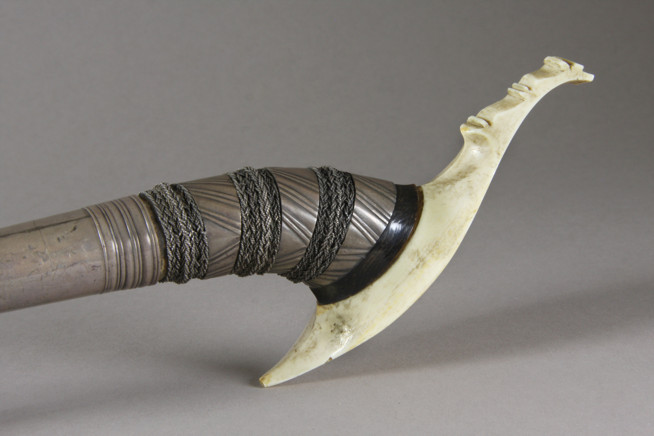
Detail of Barong #2004x5.138 (photo by Rosalie Villanueva).
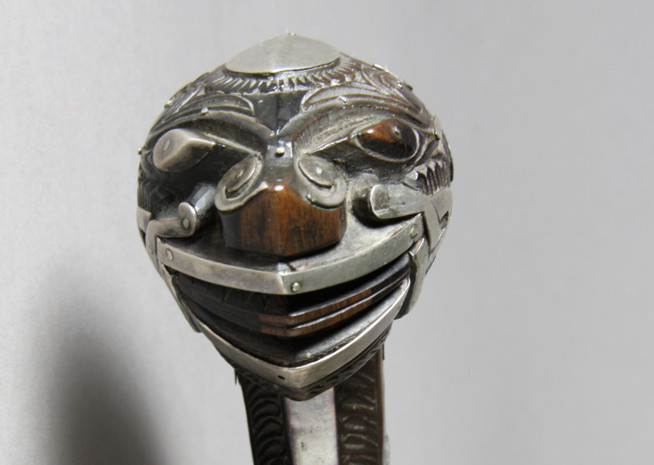
The tenegre from Visaya and Luzon have strange heads, variously described as lions, bats, or deities. Detail of 19th century sword #909.64.22 (photo by Rosalie Villanueva).
LINKS
